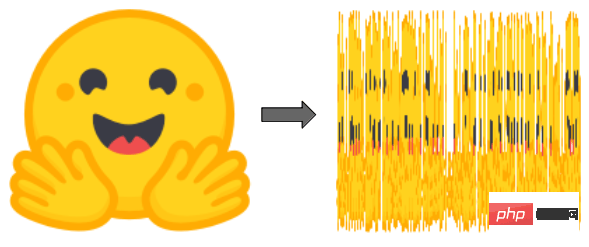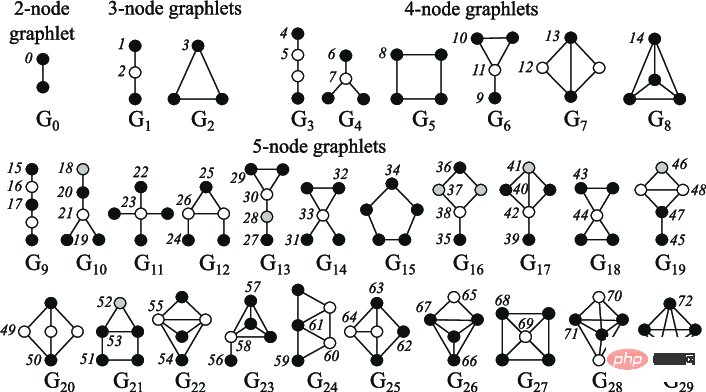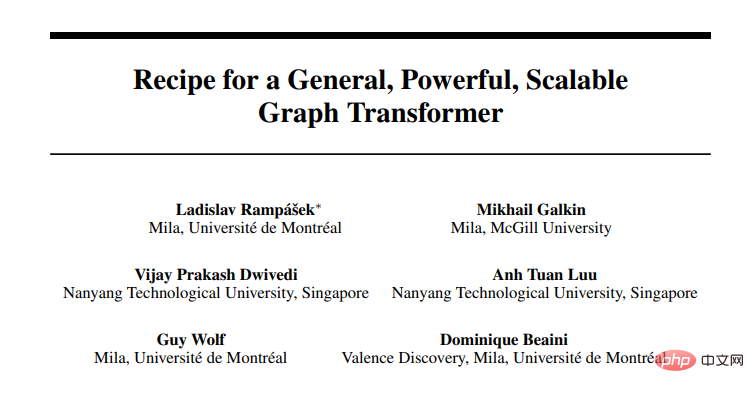
In our life today, examples of graphs include social networks, such as Twitter, Mastodon, and any citation network linking papers and authors, molecules, knowledge graphs, such as UML diagrams, encyclopedias, and anything with hyperlinks Websites, sentences represented as syntactic trees, and any 3D grid, etc., it can be said that graphs are everywhere.
Recently, Hugging Face research scientist Clémentine Fourrier introduced today's ubiquitous graph machine learning in the article "Introduction to Graph Machine Learning". What are graphics? Why use graphs? How best to represent a graph? How do people learn from graphs? Clémentine Fourrier pointed out that a graph is a description of items linked by relationships. Among them, from pre-neural methods to graph neural networks are still commonly used graph learning methods.
In addition, some researchers have recently begun to consider applying Transformers to graphs. Transformers have good scalability and can alleviate some of the limitations of GNN, and the prospects are very promising.
Essentially, the graph is a description of the relationship-linked items. Items of a graph (or network) are called nodes (or vertices) and are connected by edges (or links). For example, in a social network, nodes are users and edges are connections between users; in molecules, nodes are atoms and edges are their molecular bonds.
As you can see, when using data, you must first consider its optimal Representation, including homogeneous/heterogeneous, directed/undirected, etc.
At the graph level, the main tasks include the following:
Node layer is usually prediction of node attributes, for example Alphafold uses node attribute prediction to predict It is a difficult biochemical problem to predict how a molecule will fold in 3D space given the 3D coordinates of the atoms in the overall diagram of the molecule.
Edge prediction includes edge attribute prediction and missing edge prediction. Edge attribute prediction helps predict drug side effects, given the adverse side effects of a pair of drugs; missing edge prediction is used in recommendation systems to predict whether two nodes in the graph are related.
At the subgraph level, community detection or subgraph attribute prediction can be performed. Social networks can use community detection to determine how people are connected. Subgraph attribute prediction is often used in itinerary systems, such as Google Maps, which can be used to predict estimated arrival times.
When it comes to predicting the evolution of a specific graph, everything in the transformation setup, including training, validation, and testing, can be done on the same graph. But creating training, evaluation, or test datasets from a single graph is not easy, and a lot of work is done using different graphs (separate training/evaluation/test splits), which is called an induction setting.
There are two common ways to represent graph processing and operations, either as a set of all its edges (possibly supplemented by a set of all its nodes), or as a set of all its nodes adjacency matrix between. Among them, the adjacency matrix is a square matrix (node size × node size) indicating which nodes are directly connected to other nodes. Note that having a sparse adjacency matrix makes the computation more difficult since most graphs are not densely connected.
Graphs are very different from typical objects used in ML, since their topology is more complex than "sequences" (like text and audio) or "ordered grids" (like images and videos): even though one can It is represented as a list or matrix, but this representation cannot be considered an ordered object. That is, if you scramble the words in a sentence, you create a new sentence, and if you scramble an image and rearrange its columns, you create a new image.

Note: The Hugging Face logo and the disrupted Hugging Face logo are completely different new images
But this is not the case with graphs: if we shuffle the edge lists or columns of the adjacency matrix of the graph, it is still the same graph.

Note: On the left is a small picture, yellow represents nodes, orange represents edges; the adjacency matrix on the center picture, columns and The rows are arranged in node alphabetical order: the row for node A (the first row) can be seen to be connected to E and C; the picture on the right has the adjacency matrix scrambled (the columns are no longer alphabetically ordered), which is still a valid representation of the graph, That is, A is still connected to E and C Predictors are trained for the target task by first generating a meaningful representation for the project, where nodes, edges, or complete graphs depend on specific task requirements. As with other patterns, you can constrain the mathematical representation of an object so that it is mathematically close to a similar object. But within this, similarity is difficult to strictly define in graph ML: for example, are two nodes more similar when they have the same label or the same neighbors?
Pre-neural approach
Simple use of engineering features
Node-level features can provide information about importance as well as structure-based information and combine them.
Node centrality can be used to measure the importance of nodes in the graph, calculated recursively by summing the neighbor centralities of each node until convergence, or by the shortest distance measure between nodes To calculate recursively, the node degree is the number of direct neighbors it has; the clustering coefficient measures the degree of connection of the node neighbors; the Graphlets degree vector calculation can calculate how many different graphlets are rooted at a given node, where graphlets can be used to give Create all sparklines with a certain number of connected nodes.
Note: 2 to 5 node diagram
 Edge level Features are supplemented by more detailed information about node connectivity, including the shortest distance between two nodes, their common neighbors, and the Katz index, which refers to the path of a certain length that may be traveled between two nodes. - which can be calculated directly from the adjacency matrix).
Edge level Features are supplemented by more detailed information about node connectivity, including the shortest distance between two nodes, their common neighbors, and the Katz index, which refers to the path of a certain length that may be traveled between two nodes. - which can be calculated directly from the adjacency matrix).
Graph-level features contain high-level information about graph similarities and distinctiveness, where subgraph counts, although computationally expensive, provide information about subgraph shapes. The core method measures the similarity between graphs through different "bag-of-nodes" methods (similar to bag-of-words).
The walking-based method uses the probability of visiting node j from node i in a random walk to define the similarity measure, These methods combine local and global information. For example, previously Node2Vec simulated random walks between graph nodes, using skip-grams to process these walks just like we do words in sentences to compute embeddings.
These methods can also be used to speed up the calculation of the PageRank method, which assigns each node an importance score based on its connections to other nodes, such as by random walking to evaluate its Access frequency. However, the above methods also have certain limitations. They cannot obtain the embedding of new nodes, cannot capture the structural similarity between nodes well, and cannot use added features.
Neural networks can generalize to unseen data. Given the representation constraints mentioned earlier, how should a good neural network handle graphs?
Two methods are shown below:
Equation: P(f(G))=f(P(G))P(f(G))=f(P(G)), where f is the network, P is the permutation function and G is the graph
#Explanation: Permuting nodes before passing them to the network should be equivalent to permuting their representation
Typical neural networks are not permutation invariant, such as RNN or CNN, so a new architecture - graph neural network - was introduced (originally as a state-based machine ).
A GNN is composed of consecutive layers. A GNN layer represents a node as a combination of the representation of its neighbors and itself from the previous layer (message passing), often with activations added to add some non-linearity. Compared with other models, CNN can be regarded as a GNN with fixed neighbor size (through sliding window) and ordering (non-permutation equivariance); while Transformer without position embedding can be regarded as a GNN on a fully connected input graph.
There are many ways to aggregate information from node neighbors, such as summation, averaging, and similar aggregation methods that have been used before. Class methods include:
Choose an aggregation: Some aggregation techniques (particularly average/maximum sets) suffer from failures in creating fine-grained representations that distinguish different node neighbor representations of similar nodes. Situation; for example, through the mean set, a neighbor with 4 nodes represented as 1, 1, -1, -1, with an average of 0, is no different from a neighbor with only 3 nodes represented as -1, 0, 1 .
At each new layer, the node representation includes more and more nodes. A node passes through the first layer, an aggregation of its direct neighbors. Through the second layer, it is still an aggregation of its immediate neighbors, but now its representation also includes their own neighbors (from the first layer). After n levels, the representation of all nodes becomes the set of all its neighbors with distance n, and therefore an aggregation of the full graph if its diameter is less than n.
If there are too many network layers, there is a risk that each node becomes an aggregation of the complete graph (and the node representation converges to the same representation for all nodes), which is called overshooting The smoothing problem can be solved by:
The over-smoothing problem is an important research area in graph ML because it prevents GNNs from scaling , as Transformers have been demonstrated in other models.
Transformer without position coding layer is permutation invariant, and Transformer also has good scalability, so research People have recently begun to consider applying Transformers to graphs. Most methods focus on finding the best features and the best way to represent the graph, and changing the attention to adapt to this new data.
Shown below are some methods that achieve state-of-the-art or close results on Stanford’s Open Graph Benchmark:
Recent research "Pure Transformers are Powerful Graph Learners" introduced TokenGT in the method, representing the input graph as a series of node and edge embeddings, that is, using regular Enhanced with intersection node identifiers and trainable type identifiers, without positional embeddings, and providing this sequence as input to Transformers, this method is very simple and at the same time very effective.

##Paper address: https://arxiv.org/pdf/2207.02505.pdf
In addition, in the study "Recipe for a General, Powerful, Scalable Graph Transformer", unlike other methods, it introduces not a model but a framework, called GraphGPS, which allows the message passing network to be combined with Linear (remote) Transformers combine to easily create hybrid networks. The framework also contains several tools for computing positional and structural encodings (node, graph, edge level), feature augmentation, random walks, etc.

Paper address: https://arxiv.org/abs/2205.12454
Use Transformer Graphs are still very much in their infancy, but for now they are very promising. They can alleviate some of the limitations of GNNs, such as scaling to larger or denser graphs, or without over-smoothing. Increase model size in case.
The above is the detailed content of Graph machine learning is everywhere, using Transformer to alleviate GNN limitations. For more information, please follow other related articles on the PHP Chinese website!
 How to check server status
How to check server status
 How to solve the computer prompt of insufficient memory
How to solve the computer prompt of insufficient memory
 How to optimize a single page
How to optimize a single page
 What should I do if the web video cannot be opened?
What should I do if the web video cannot be opened?
 How to implement linked list in go
How to implement linked list in go
 How to buy and sell Bitcoin legally
How to buy and sell Bitcoin legally
 Introduction to the main work content of the backend
Introduction to the main work content of the backend
 Use of jQuery hover() method
Use of jQuery hover() method
 Why does the computer have a blue screen?
Why does the computer have a blue screen?




